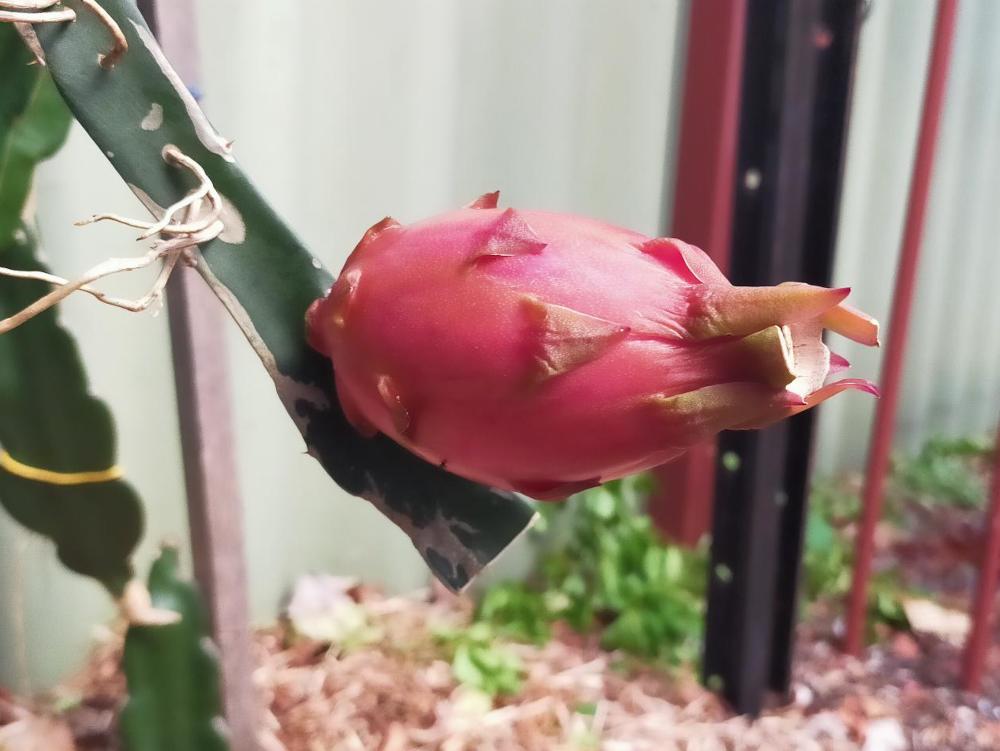Overview
H. guatemalensis × setaceus, cv. Pink Panther
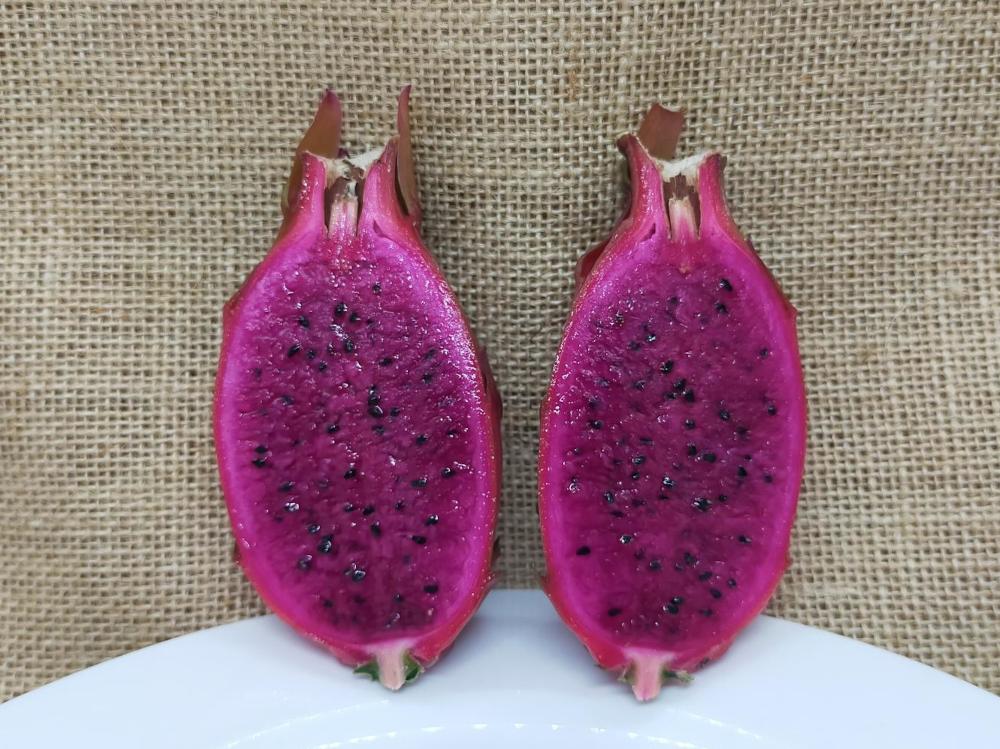

Other names: Pink Diamond (seedling)
Pollination: self-fertile
Pink Panther is a small, pink-fleshed fruit of high popularity and it’s easy to see why. The playful name perfectly compliments the rush of flavours it releases upon eating: a mix of berries and melons with a nice overarching
sweetness. The seeds are slightly larger than regular dragon fruit varieties, which adds a nice crunch to your bite. The only downside is of course its small size, which is why I plan on growing more of this variety. The fruit is
similar to Malaysian Purple in taste, though it is more oblong and has a lighter skin.
Pink Panther is quite a slow grower, and is easily outcompeted by other varieties,
so best to grow it by itself if possible. However, sun tolerance does appear to be decent.
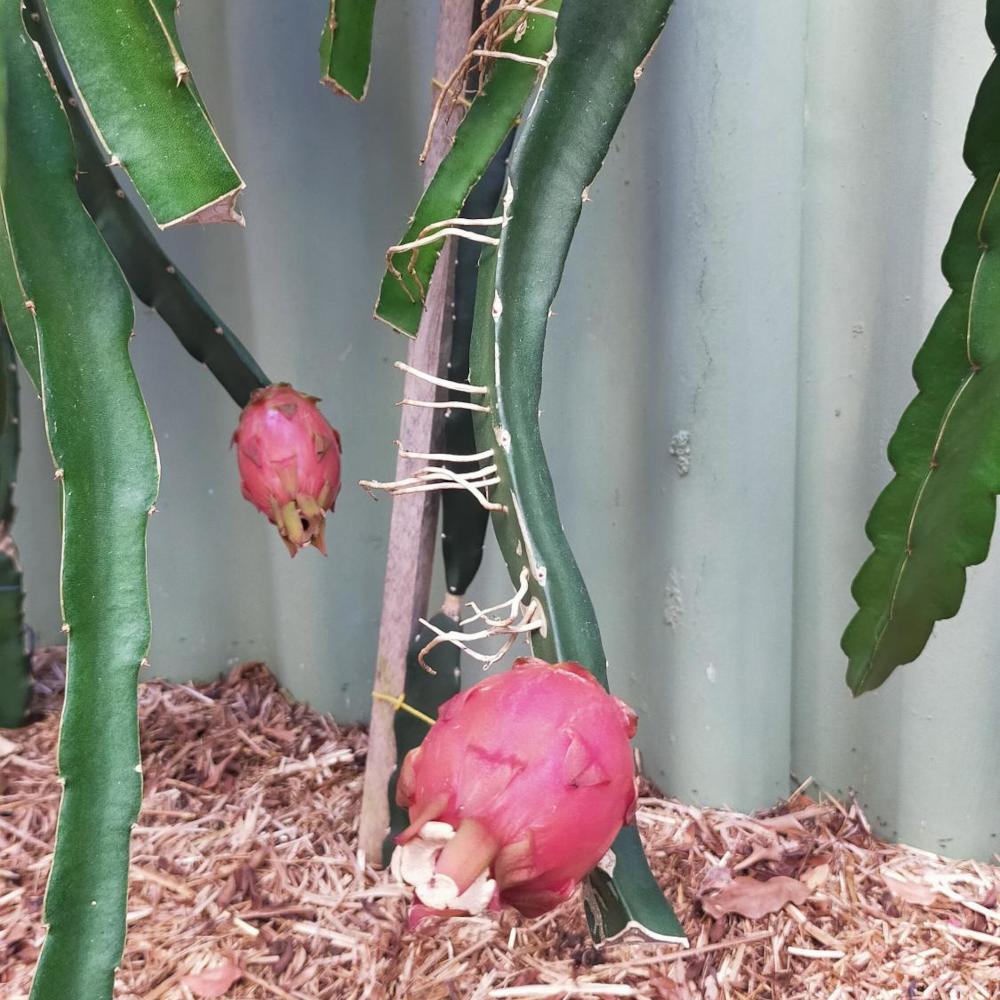
Buds
Pink Panther has already shown the capacity to bud with less biomass than regular dragon fruit varieties, though not to the extent of Malaysian Purple. Buds are very typical of a coloured-flesh dragon fruit with red tips, though development is a slow process.
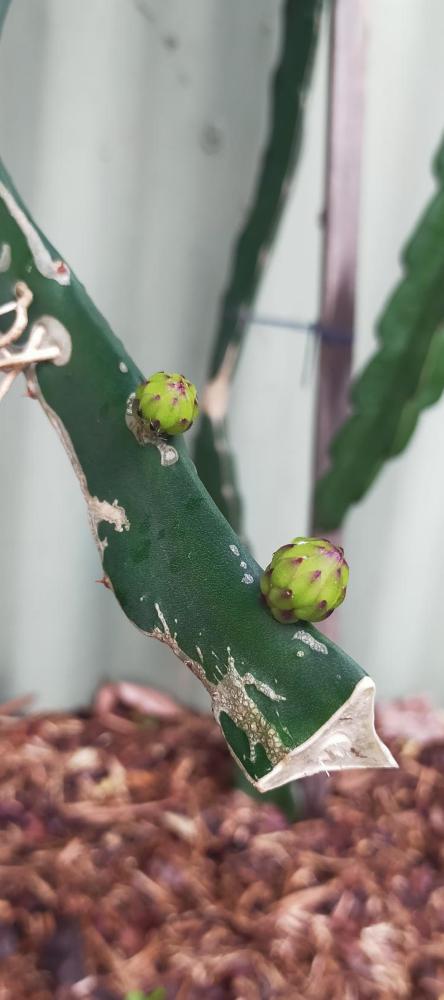
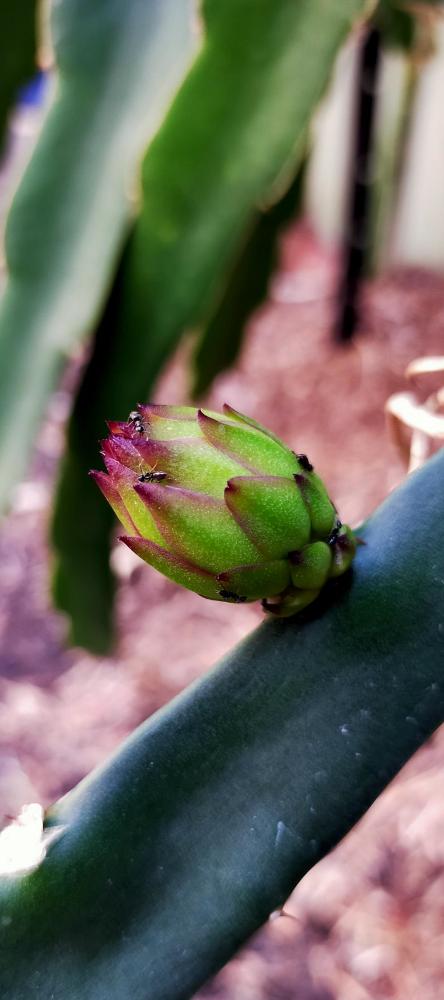
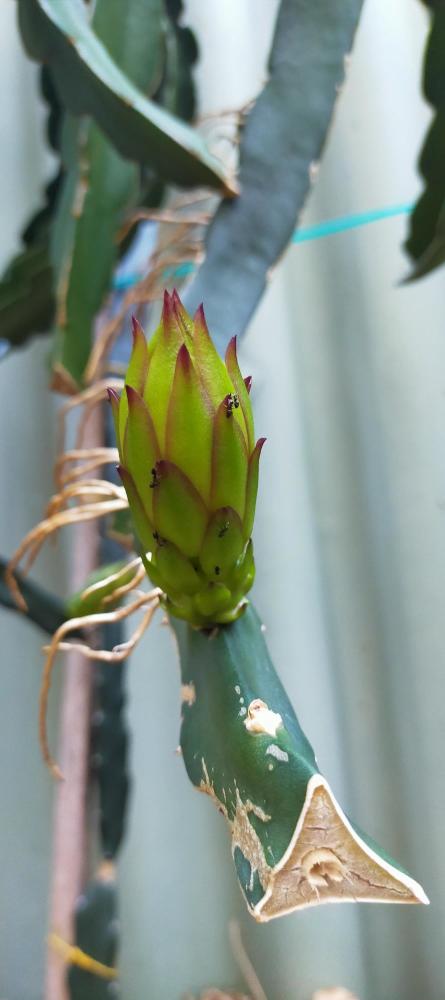
Flowers
I was actually away for my first flush of Pink Panther flowers, so I am unsure to the extent of pollen produced. However, this variety is widely known to be self-pollinating despite the slight protrusion of the stigma, though best to be safe and hand pollinate.
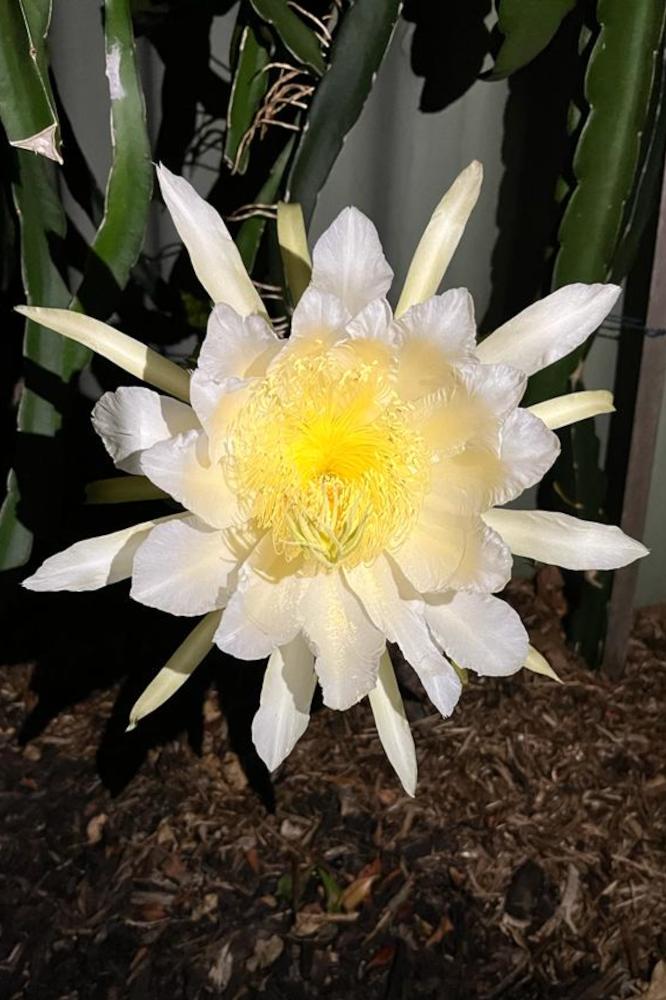
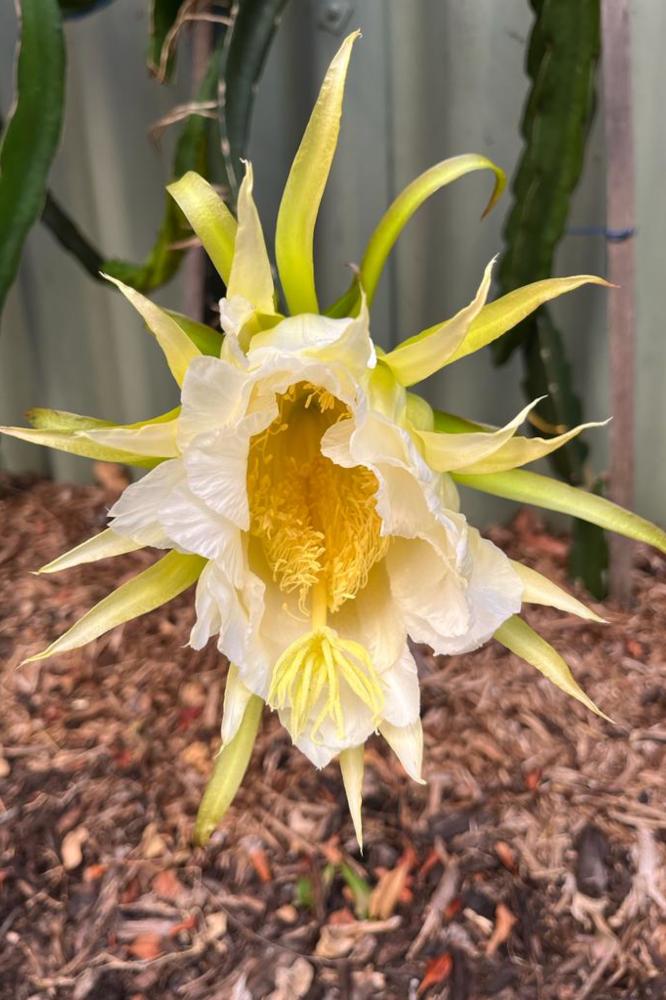
Fruit
Pink Panther fruits take a long time to “plump up”, staying as a tiny green fruit for quite some time to the point where you’re worried if you’ll ever get more than a spoonful. However, when the fruits finally change colour they quickly fatten up and become loose, ready for picking. The colour change has an intermediate stage with a slight orange tinge which is interesting, though this quickly fades to light pink.
